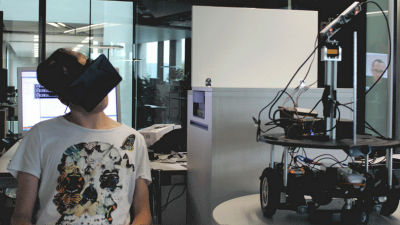Meta's VR research team 'Reality Labs' has released two prototypes of VR devices under development, what is the new technology?

Meta's research department '
Demo or Die: How Reality Labs' Display Systems Research Team Is Pushing the VR Industry Toward the Future | Meta Quest Blog | Meta Store
https://www.meta.com/ja-jp/blog/quest/reality-labs-research-display-systems-siggraph-2023-butterscotch-varifocal-flamera/
◆Butterscotch Varifocal
'Butterscotch Varifocal' is a prototype VR headset that Meta has been working on since 2015 and whose existence became public in 2018. Butterscotch Varifocal features a variable focus technology called 'Half Dome' and a retina resolution display that reproduces the resolution of the human eye.

Reality Labs publishes below what it looks like through the Butterscotch Varifocal lens.
Butterscotch Varifocal: Through-the-Lens Footage of Lone Echo II-YouTube
Normally, distant objects appear blurred when looking at near objects, and near objects appear blurred when looking at distant objects. However, the scenery seen with a VR device is an image projected on a flat display, and even if you look at a virtual object with the naked eye, the distance between the display and your eyes does not change, so the focus does not change.
The variable focus technology 'Half Dome' installed in Butterscotch Varifocal is a technology that uses eye tracking technology to determine 'where the user is looking' and moves the display closer or further away from the eye accordingly. is. You can see how the focus actually changes in the VR space in the following movie.
Butterscotch Varifocal: Through the Lens-YouTube
Also, in the movie below, you can see where the motor that moves the display built into Butterscotch Varifocal works.
Butterscotch Varifocal: Motor Detail-YouTube
However, in order to achieve retinal resolution with a liquid crystal display panel that is easily available on the market, the field of view will inevitably become narrow. According to Reality Labs, the viewing angle of Meta Quest 2 exceeds 90 degrees, while Butterscotch Varifocal is 50 degrees at the time of writing the article.
Also, due to the introduction of Half Dome's variable focus display, the main body size will be slightly larger than Meta Quest 2. Half Dome has four versions so far, and the third version introduced an electronic variable focus system instead of a mechanical one, and it seems that the size has become smaller. However, as a result of considering performance, the fourth version returned to the mechanical variable focus system again.
“The goal of Butterscotch Varifocal is to demonstrate a VR display system capable of providing visual clarity that roughly matches the ability of the human eye,” said Yang Zhao, an optics researcher at Reality Labs. means that the headset can display details with near-definition sharpness that the human eye can perceive, plus the variable focus display supports the human eye's accommodation range, so you can see different focal points. You can recognize high resolution at depth, ”he commented.
◆Flamera
With VR, you can experience fully immersive experiences, such as watching movies on a giant screen that doesn't exist in reality, or interacting with more interactive content. However, you cannot see the real world outside the headset, and you have to remove the headset each time. 'Pass-through' solves this problem, allowing you to see the outside world in monochrome on Meta Quest 2 and in full color on Meta Quest Pro through a VR headset.
Flamera is a technology for creating a pass-through that is more true to the naked eye. Reality Labs explains Flamera in the following movie.
Flamera: Reprojection-Free Light Field Passthrough Overview-YouTube
Pass-through is a mechanism in which images captured by the inside-out camera built into the headset are converted into 3D images by internal processing and projected. However, since the inside-out camera is positioned differently from the naked eye, the image captured by the inside-out camera is inevitably different from the reality seen by the naked eye.
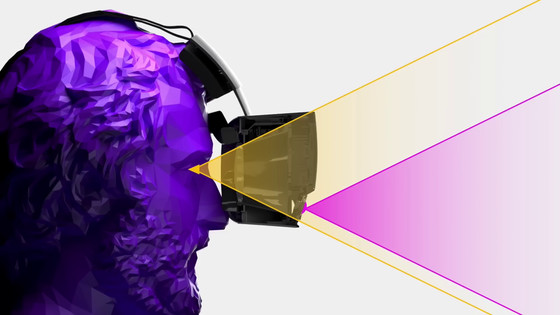
The pass-through video actually seen on Meta Quest 2 looks like this. Although it is black and white, it is possible to understand what is being photographed.
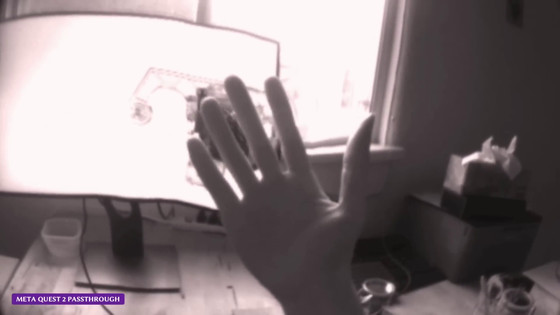
Flamera is an optical technology that aims to directly capture the same light rays that you see with the naked eye. The idea itself is simple: by preparing many lenses and reading the light from the lenses in the same direction as the line of sight, a pass-through that is close to the image seen by the naked eye is realized.

The lens part of Flamera actually being developed looks like this.
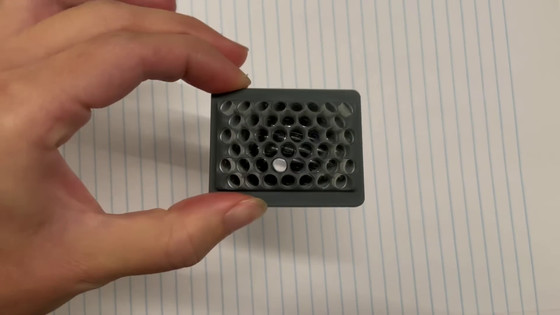
Below is Flamera's demonstration headset incorporating this lens, which looks very different from a typical VR headset. According to Grace Kuo, an optical researcher who is conducting research and development of Flamera, the closer the display and the eye position, the higher the performance of Flamera, but incorporating Flamera's camera sensor makes the headset quite large. Because it becomes, he said that he is designing the headset itself from scratch keeping in mind how the headset can be made thinner.
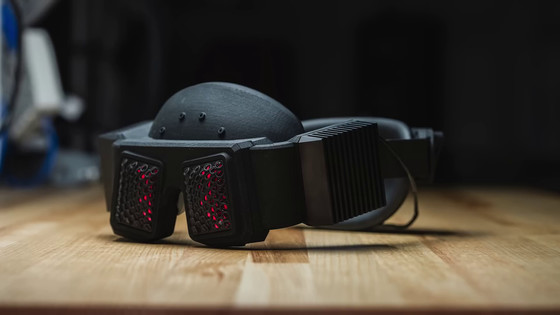
The scenery actually seen with the naked eye before wearing the headset looks like this.
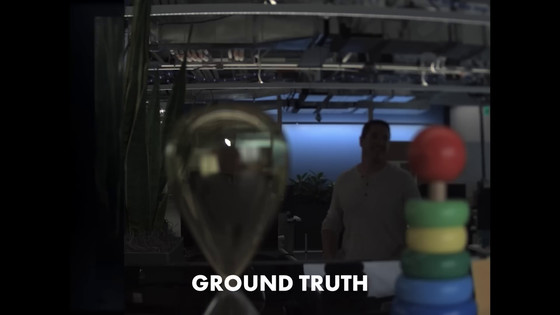
And this is the pass-through video that can be seen with Flamera's demonstration headset. There is almost no difference from the scenery seen with the naked eye.
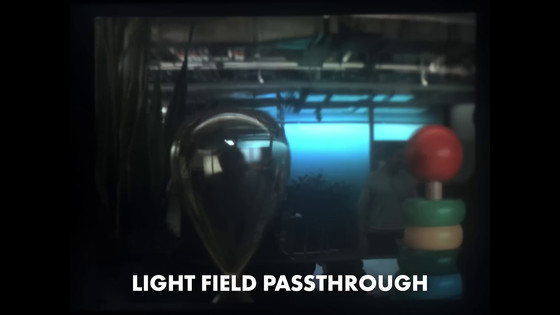
Flamera's pass-through image has almost no distortion, and the perspective of objects is clearly visible, making it easier to pick up what is on the desk.
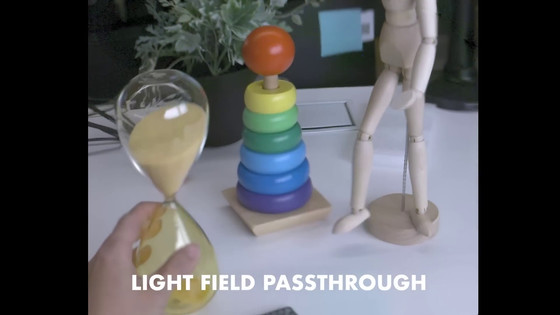
``I think pass-through is a key technology that allows you to stay connected to your surroundings while wearing the headset,'' Kuo said. This allows us to test new technologies and deliver a wide range of experiences in VR, and even if the headset looks very different from what you are used to, this demo will give you an idea of what the future of VR will look like. I would appreciate it if you could get a glimpse of what it will be like.'
Related Posts:




